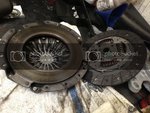isrboss
I applaud the fact that some will never quit trying to find a better way, but I'm not finding breakthroughs here in reliability. The flip side is if manufactures keep having their vehicles on their lifts for the same issue, they usually apply a fix to the troubled area/part. I don't see this happening for the trans/clutch problem though. The GT500's, Mustangs/Boss and others say R/S's have it as well, so it does appear the aftermarket is going to need to step up and fix this for us. The spring is not the fix(for some), the clutch is not the fix(for some). My guess would have to be the hydraulics is the real fix. I don't think it would be all that hard for some of you to just add a separate reservoir to the clutch, block off the fittings on the brake reservoir and see what happens. That would be a good place to start, what do you guys think, is that a doable test?














